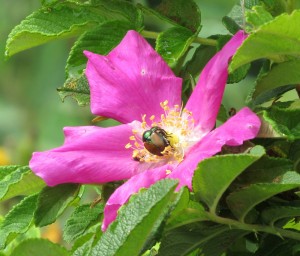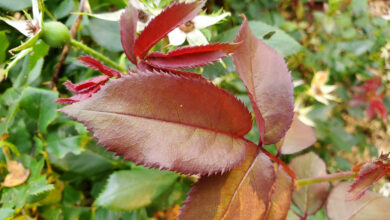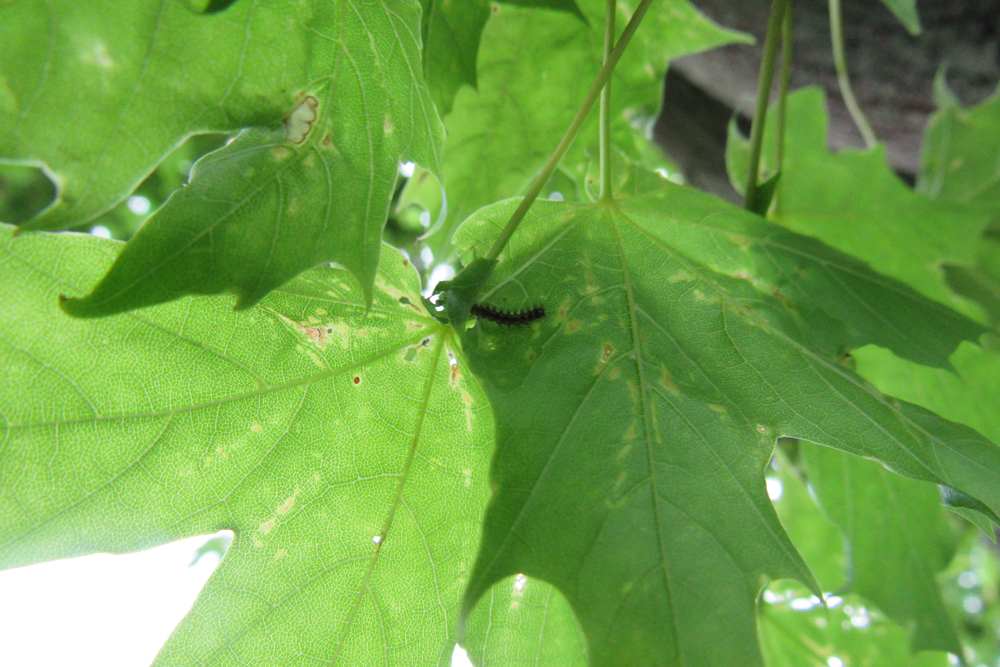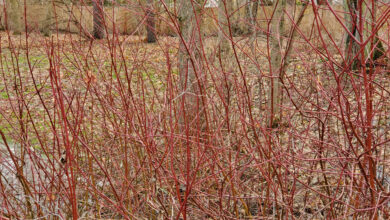Managing pests in the home garden with IPM
In my previous garden column, I wrote about nuisance wildlife and how especially voracious native fauna have been during this dry growing season.
Insect pests are always an issue for home gardeners as they enjoy our landscape as much as we do, and they, like the bigger animals, are especially in need of nourishment with the challenges that this year’s weather has provided.

A pair of Japanese beetles “do their thing” on one of my rugosa rose blossoms. Knowing what pests are present in your garden and their life-cycles, can help you develop your own pest management strategy. K. Gabalski photo.
Cornell Cooperative Extension recommends a number of mechanical and cultural practices to help reduce pests in your home vegetable and flower gardens. IPM – Integrated Pest Management – requires willingness on your part to work – but it is often the best and safest way to limit damage while protecting the many beneficial insects which help your garden and crops grow successfully.
First, learn as much as you can about which insects truly are pests – their habitat, life cycle, behavior and what they eat.
Maintaining healthy plants is another important practice. Stressed plants are the most vulnerable to attack and damage from pests. Fertilize, lime, and water properly, overdoing any of these measures can weaken plants. Thin plants to recommended spacing and check your soil pH regularly, making any necessary adjustments. Organic gardening focuses on healthy soil producing healthy plants. Compost and add organic material to your garden soil to improve it’s fertility and tilth.
Practice crop rotation with vegetables. Rotation is not as helpful with flying pests, but it can be effective with problems like grubs (and disease). Do not plant crops susceptible to grubs or wireworms where grass has grown the previous year.
Try to choose recommended and resistant varieties of flowers and vegetables. Cornell gives butternut squash, which is resistant to squash vine borer, as one such example.
Sanitation is important. Remove weeds and keep an eye on organic mulches, which can provide slugs and snails a place to hide.
Check transplants for pests before purchasing and planting and consider planting some veggies earlier or later in the season to avoid damage.
Handpicking of insects – Japanese beetles, squash bugs, etc. – is time consuming, but effective. Place them in a bowl or bucket of soapy water to kill them.
Physical barriers – such as cardboard collars – placed four inches high around transplants – can prevent cutworm damage and tar paper or carpeting placed around stems of cabbage family crops can prevent cabbage maggot fly eggs from being deposited. Row covers can be effective prior to flowering. Lightweight covers for summer let in light and water. Remove for pollination once blooming begins.
Biological control makes use of the introduction of predators, parasites or even disease. Keep in mind that if you introduce predatory or parasitic insects, they need sufficient hosts upon which to feed, or they will move on.
Pesticides may also be a part of your pest management program. Follow label directions and use only the amount needed and treat only crops that need treating. Spot treatments are the most beneficial. Botanical insecticides are still insecticides and, therefore, are toxic. Use with care.
Biorational pesticides like Bacillus thuringiensis (B.t. – a bacterium), which attacks caterpillars, are an alternative to some chemical pesticides.
Insecticidal soaps are useful for some pests, especially aphids, and are an alternative to chemical pesticides.
Diatomaceous earth is a dessicant and can be used to control slugs and snails. It loses its effectiveness, however, once it is wet and compacted.
Finally, try to keep a record of what you did and if it was successful. Keep track of when certain pests arrive, and when they cause the most damage in your garden. This information can be a valuable resource as you make pest management decisions in the future.






